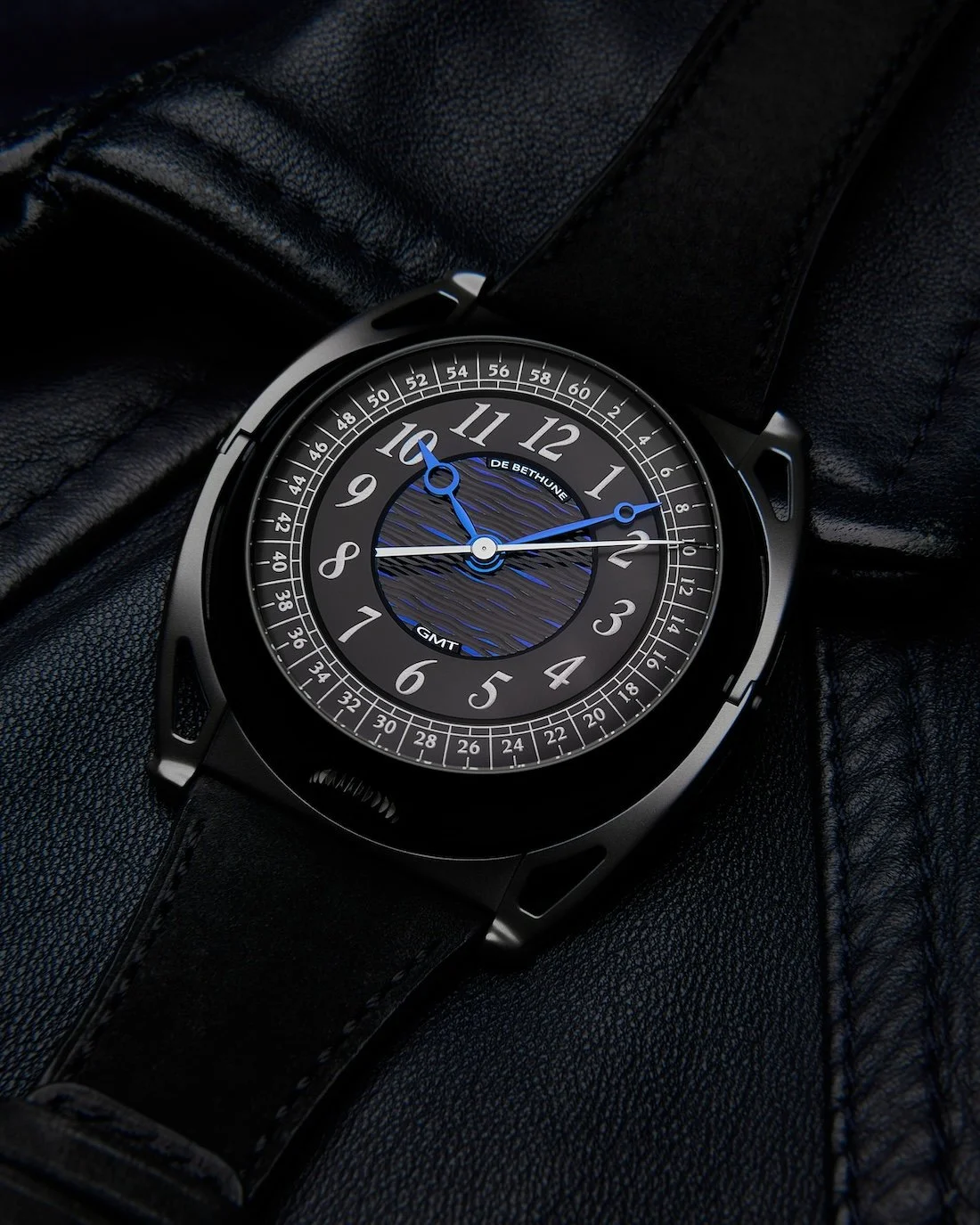Nearly 150 years on, and still in Sainte-Croix, Reuge is the only remaining manufacturer of high-end music boxes in the world. Reuge's collection has grown to offer both quintessentially classical pieces and contemporary designs —including a service for specially commissioned bespoke pieces. With the MB&F MusicMachines, Reuge has pushed the frontiers of music box design: MusicMachines belong more to the 25th century than the 21st. Designed by MB&F and made by Reuge, the first MusicMachine was launched at Baselworld 2013. Building on the success of this initial collaboration, Reuge and MB&F joined forces in 2014 for MusicMachine 2 and again in 2015 for MusicMachine 3, which completes the trilogy.
The TIE fighter-inspired MB&F MusicMachine 3 Reuge is positive proof that both the child and the Force are still going strong within MB&F founder Maximilian Büsser —who was 10 years old when he first saw Star Wars in 1977. While MusicMachine 3 may look as though it is more at home darting around in the silent vacuum of space, it is in the sound-propagating, air-rich atmosphere of Earth in which MM3 really displays its mettle. Those lattice-like vertical wings support and protect the dual music cylinders, each playing three melodies: the theme tunes from Star Wars, Mission Impossible, and James Bond on the right and The Godfather, Merry Christmas Mr. Lawrence, and The Persuaders on the left. Those side wings also play a vital role in propagating sound vibrations down from the combs to the naturally amplifying resonant base, manufactured by JMC Lutherie.
MM3 may appear to come from a galaxy far, far away in the future; however, its origins are much older and much closer to home. MusicMachine 3 features all of the traditional elements of a beautifully arranged, high-end mechanical music box. This should come as no surprise as it was developed and crafted according to MB&F's design by Reuge, the Swiss music box manufacturer with 150 years of expertise and experience.
The music in MusicMachine 3 is powered by two independent movements mounted on the two tail sections. Each movement has its own winding key —disguised as thrusters—, a mainspring barrel, horizontal cylinder with pins, and comb with hand-tuned teeth sounding each note. The cylinders play three melodies each. An air regulator in the form of a circular fan —resembling a rotating radar dish— governs the unwinding speed/music tempo of each cylinder. To ensure the lateral symmetry of MM3, Reuge broke with music box convention to configure the two movements as mirror images of one another. This required a complete inversion of the design of the movement components and the movement architecture so that one cylinder rotates clockwise and the other anticlockwise.
The MB&F MusicMachine 3 doesn't just look as though it has flown in from a more advanced civilization, it sounds like it as well. The majority of music boxes amplify sound through their wooden cases, much like guitars and violins do. MM3 is carefully designed to transmit the musical vibrations from the combs down through the two vertical side wings to its resonance base. This natural timber amplifier was developed by Jeanmichel Capt of JMC Lutherie, based in the Vallée de Joux, in the heart of Switzerland’s horological landscape. The two combs lie flat beside each cylinder, each forming a unique pair containing the bespoke selection of 72 notes. The combs are hand-tuned from a unique steel alloy selected for its acoustic impact. For bass notes, the tooth is thickened by the traditional method of adding lead. A machine then tests the frequency of each tooth, and slivers of material are removed to accurately tune each note. The hand-operated tools that Reuge uses in this process have been developed in-house. Tiny transparent, synthetic feathers are added behind the bass note teeth, acting as dampers. Once the comb is attached to the main plate using heat-blued screws, the musician’s ear is required again for the concluding fine-tune.
MusicMachine 3 is a limited edition of 99 pieces: 33 pieces with white finish; 33 pieces with black finish; and 33 pieces with ‘chrome’ finish. The MM3 with soundboard base measures 15.75 inches in length, 13.4 inches wide and 11 inches tall. The total weight of the MusicMachine 3 is approximately 6 kilograms —13 pounds.
The main body is made of aluminum with lacquer finish and the matte sections feature a protective varnishing. MusicMachine 3 features two 3.72 movements —3 refers to number of melodies on each cylinder; 72 refers to number of notes on each comb—; one movement is ‘right’ configured; one movement is ‘left’ configured as they rotate in opposite directions. The main plate is polished brass decorated with Geneva waves and it holds both movements —each movement includes a mainspring, cylinder, comb, and regulator. Each pin on the comb measures 1 mm in height with a diameter of 0.3 mm. Each melody played is 35 seconds long and the right cylinder plays extracts from: ‘Star Wars’ (1977) by John Williams; ‘Mission Impossible’ (1960) by T Lalo Schifrin and ‘James Bond’ (1962) by Monty Norman. Meanwhile the left cylinder plays extracts from: ‘The Godfather' (1972) theme by Nino Rota; ‘Merry Christmas, Mr. Lawrence’ (1983) by Ryuichi Sakamoto and ‘The Persuaders’ (1971) main title by John Barry.
Sticker Price $20,000 USD. For more info on MB&F click here.





















